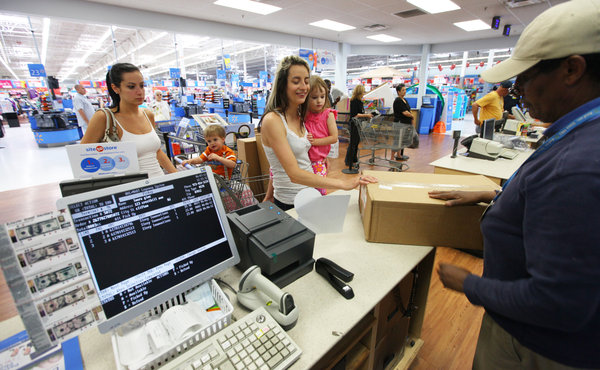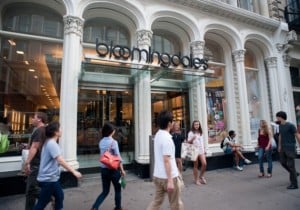In a book I have recently read, Strategy is defined as positioning an organization for competitive advantage. It involves making choices about which industries to participate in, what products and services to offer and how to allocate corporate resources. 1 As with any good strategy, there is a need for flexibility to react to a market and / or the competitors. A corporation is constantly learning about their position and adjusting to maintain a competitive advantage. This is never more apparent than in the retail industry today.
Black Friday has become almost a holiday in its own right. It is the day after Thanksgiving, which is thought to be the busiest shopping day of the year and the beginning of the holiday shopping season. There are several theories about why it’s called ‘Black Friday’, but the most common in the retail industry is due to retailers running at a loss (red) until Thanksgiving when they start taking in a profit (black). Traditionally, retail has strictly been brick and mortar stores. In 2005 companies started becoming a little more aggressive with their deals hitting the market place the day after Thanksgiving. The past few years a new channel has opened competition even more where people are shopping online.
Last year we started seeing a couple different strategies with retailers offering door buster deals and opening earlier on Thanksgiving. However, this year there is definitely more strategy involved with companies taking different approaches. For example, Foot Locker is not discounting goods. It is releasing a hot new shoe at the regular price and keeping their other products at regular price as well. Target is not discounting goods but is offering a line of luxury items no other retailer is carrying. Wal-Mart opened its stores 2 hours earlier this year and is trying to balance its promotions between the store and its online customers. They are trying to drive more customers to Walmart.com without affecting the stores. Lastly, Amazon is offering free shipping for any goods bought on their website.2 These are all examples of companies changing their strategy and combating their competitors.
I just read an article stating top online retailers have sales up 28.4% over last year. Last year’s holiday online retail sales were approximately $67 billion and this year they may reach $79 billion.4 Not only is this huge growth, but it shows that retailers need to change with the times or they will find themselves out of business. The other amazing stat is PayPal had almost a 200% volume increase in mobile payments. 4 This is telling me people are in the stores with their mobile devices and purchasing online. Brick and mortar operations cannot survive this consumer behavior. What does it mean to retail, as we know it? I am not sure. However, I am certain it is changing and companies will have to change with it.
I found these articles interesting for a couple of different reasons. First, we are identifying a strategy as part of a project in class. It makes you realize we need flexibility within that strategy to be successful. What we are experiencing with our shopping habits proves this extremely vital to success and survival. The second reason I find these articles interesting is because at work, I deal with payment methods and there is a lot of talk about mobile payments. Some believe it is the future while others believe it is not. There is a very interesting article below regarding PayPal discussing this very topic. We have not made a decision at work yet, but it is good to have some options ready in the event we have to change our strategy.
References
- Cornelis A. de Kluyver & John A. Pearce II “Strategy: A view From the Top” Pearson Education 2012
- Will Retailers’ Black Friday Strategies Work?
http://professional.wsj.com/article/SB10001424127887323622904578129544038176924.html?KEYWORDS=youtube+strategy&mg=reno64-wsj - If You Want to Beat ‘Em. Learn From ‘Em First
http://professional.wsj.com/article/SB10001424052702303734204577464503619605954.html?mod=WSJ_SmallBusiness_LEFTTopStories&mg=reno-wsj - Sales soar on Cyber Monday ; Business at top retailers up 26.6%
http://professional.wsj.com/article/TPUSAT000020121127e8br0000c.html - PayPal Works to Take Its Business Offline
http://professional.wsj.com/article/SB10001424127887324595904578117212801486972.html?KEYWORDS=paypal&mg=reno64-wsj



